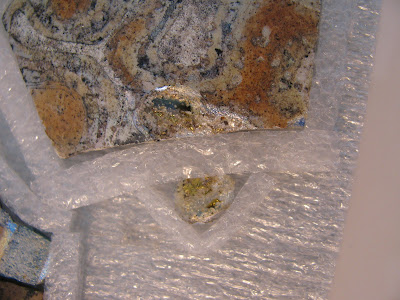Environmental monitoring has been an important aspect of the study and maintenance of the Midas Mound Tomb since the 1980s. The wooden tomb is potentially very susceptible to changes in the surrounding environment, and these conditions could be impacted by seasonal changes and tourists visiting the tomb. A thesis on the monitoring and conditions of the tomb was completed by Robyn Haynie, of the University College London, in 2009. The long-term monitoring has given us an excellent understanding of the seasonal changes that occur, and the overall environment of the tomb chamber.
Hygrothermographs were used in the past to monitor the conditions in the tomb chamber, but have now been replaced by electronic dataloggers. These dataloggers monitor the fluctuations in relative humidity and temperature, and are downloaded yearly to check the data.
Richard Liebhart removes a datalogger placed
inside the wooden tomb.
The dataloggers have been placed in various areas around and within the tomb to compare micro-environments in the tomb and larger chamber. There are also tell-tale monitors to keep track of the expansion and contraction of the wooden logs making up the structure of the tomb. These indicate that while seasonal expansion of individual logs is taking place within the tomb, the structure is stable overall.
Emily and Elizabeth change the batteries on the dataloggers.
As the dataloggers are only checked once a year, it is important to ensure that they function properly for the duration of the year. We change the batteries each time, just to be sure that this is the case.
Jessie analyzes the downloaded data.
The information is dowloaded, and compared with information from previous years. This enables us to ensure that the conditions are behaving as expected, and that major changes to the environment have not occurred.













